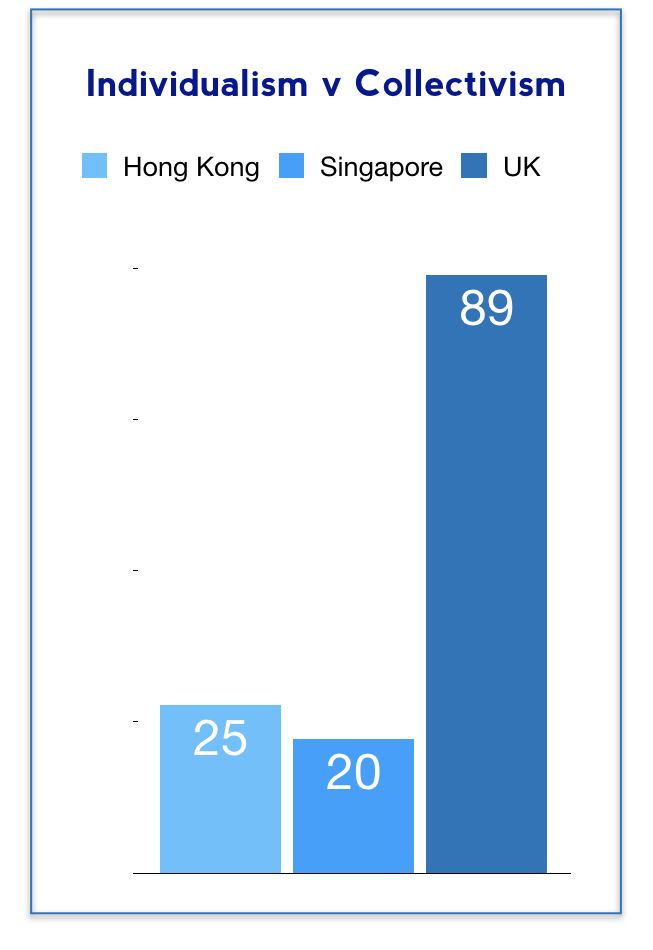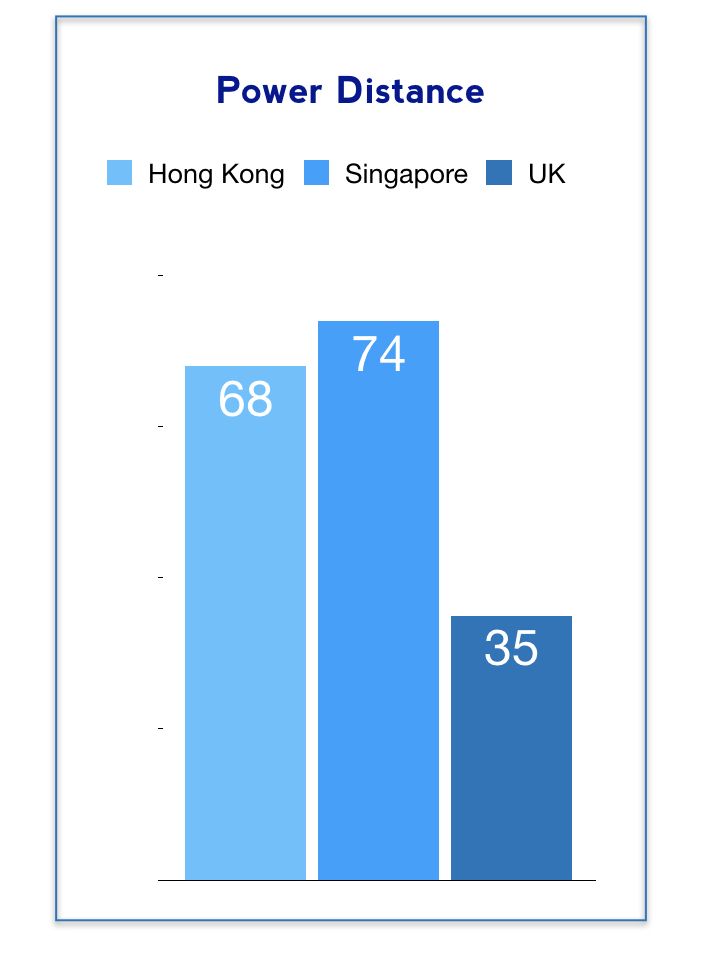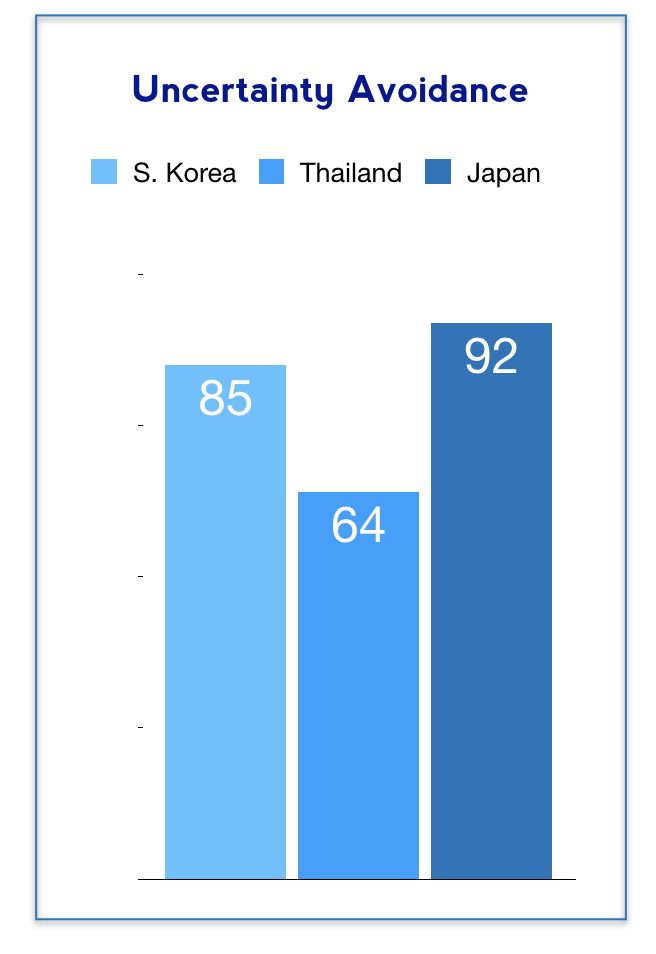How does your leadership style translate?

Social Culture - Understanding Behaviour
Working with different teams from different cultures is one of the most exciting things about international projects. Many organisations now tend to prepare their teams with some kind of cultural awareness programme before assigning them to projects outside of their own country. Without prior understanding, It can be a surprise for the inexperienced international project manager when their leadership style does not seem to connect in a different culture.
Much research has been done on the subject of national culture, with my personal favourite being the work of the Dutch social psychologist Prof. Gerard Hofstede, one of the best known specialists in this field. In this article, we will look at social culture through Prof. Hofstede's model and see how it applies to different project situations.
The Hofstede’s model looks at national culture through 6 dimensions, one of which is “Individualism”, which I will use here to demonstrate the cross-cultural considerations on a large client project.
Hofstede defines “Individualism” as "the degree to which individuals are integrated into groups". So in "High" individualistic societies, the emphasis is on personal achievements. People are expected to work on their own initiative, and recognition and reward is on a personal level. At the other end of the scale, Hofstede describes “Collectivist” societies. They demonstrate a preference for a strong group affiliations, at both a family and an organisation level.
Working with different teams from different cultures is one of the most exciting things about international projects. Many organisations now tend to prepare their teams with some kind of cultural awareness programme before assigning them to projects outside of their own country. Without prior understanding, It can be a surprise for the inexperienced international project manager when their leadership style does not seem to connect in a different culture.
Much research has been done on the subject of national culture, with my personal favourite being the work of the Dutch social psychologist Prof. Gerard Hofstede, one of the best known specialists in this field. In this article, we will look at social culture through Prof. Hofstede's model and see how it applies to different project situations.
The Hofstede’s model looks at national culture through 6 dimensions, one of which is “Individualism”, which I will use here to demonstrate the cross-cultural considerations on a large client project.
Hofstede defines “Individualism” as "the degree to which individuals are integrated into groups". So in "High" individualistic societies, the emphasis is on personal achievements. People are expected to work on their own initiative, and recognition and reward is on a personal level. At the other end of the scale, Hofstede describes “Collectivist” societies. They demonstrate a preference for a strong group affiliations, at both a family and an organisation level.

So let's look at how this applied to one of my past client projects. With a team based in Hong Kong, one of our most critical deliveries was for the Singapore office, making them key stakeholders in the project. At the same time, we reported into a UK Global office. So we have 3 core teams, all with very different cultures.
In Hofstede's model, we can see that the UK is a highly individualistic society, scoring 89 out of a possible 100. With many project team members based in the UK, it was natural for us to adopt personal bonus incentives for quality and completion of key phases of the project.
However, when we look at our Hong Kong and Singapore teams, we can see from Hofstede's model that they are more likely to place at the lower end of the Individualism scale, and display “Collectivist” preferences. For these teams, the group is much more important than the individual, meaning that personal performance rewards are not ideal. Instead, we designed rewards and incentives that motivated at a team level, respecting the group spirit.


The impact of hierarchy
Another key dimension of culture, according to Hofstede, is “Power Distance”. This describes how people respond to hierarchical structures.
For example, in "High" Power Distance countries, the boss is in charge. She/he makes decisions and these decisions are accepted and respected.
In "Low" Power Distance countries, employees expect to be part of the decision making process, and for their ideas and issues to be heard and recognised.
Looking at this chart, the UK has a very low Power Distance. The management style tends to be more democratic, and seeks input from people at all levels across the project. In contrast, both Hong Kong and Singapore are High Power distance cultures. Employees expect to be given clear instructions, and the boss is in charge.
Now this was challenging for a Programme Manager originally from the UK (me!). Used to an inclusive style of management, I started one team meeting asking for ideas on our communications strategy, only to be told by a trusted colleague later that this was seen as weak and indecisive by my local staff, on the basis that I was in charge and should have known the answer! So if you are a from a low power distance country and you are working in high power countries, you might need to be more prescriptive when allocating tasks (outcomes, deadlines) – and be careful not to give orders that you do not wish to be fulfilled! Also, when you are managing upwards, be aware that more deference is expected towards your seniors than you may be used to. A number of my western colleagues struggled to get input from one of our senior sponsors, but all it took was a more humble, respectful request for information rather than the “business-like” demands from others on the team.
Another key dimension of culture, according to Hofstede, is “Power Distance”. This describes how people respond to hierarchical structures.
For example, in "High" Power Distance countries, the boss is in charge. She/he makes decisions and these decisions are accepted and respected.
In "Low" Power Distance countries, employees expect to be part of the decision making process, and for their ideas and issues to be heard and recognised.
Looking at this chart, the UK has a very low Power Distance. The management style tends to be more democratic, and seeks input from people at all levels across the project. In contrast, both Hong Kong and Singapore are High Power distance cultures. Employees expect to be given clear instructions, and the boss is in charge.
Now this was challenging for a Programme Manager originally from the UK (me!). Used to an inclusive style of management, I started one team meeting asking for ideas on our communications strategy, only to be told by a trusted colleague later that this was seen as weak and indecisive by my local staff, on the basis that I was in charge and should have known the answer! So if you are a from a low power distance country and you are working in high power countries, you might need to be more prescriptive when allocating tasks (outcomes, deadlines) – and be careful not to give orders that you do not wish to be fulfilled! Also, when you are managing upwards, be aware that more deference is expected towards your seniors than you may be used to. A number of my western colleagues struggled to get input from one of our senior sponsors, but all it took was a more humble, respectful request for information rather than the “business-like” demands from others on the team.

Just touching briefly on a couple more of Hofstede's dimensions of culture.
"Masculinity" represents a preference in society for achievement, heroism, and material rewards, versus societal care, and quality of life. Masculine cultures are typically more competitive, and expect to take a tough stand when resolving conflict, whereas Feminine cultures are more modest, and will resolve conflict through compromise and negotiations.
Can you think of how that might affect how you manage your project? Do you expect everyone to work late into the night to get things done? Or do you respect the work life balance (Feminine) and add more resources or schedule a later finish?
The final dimension I will touch on here is "Uncertainty Avoidance", or the extent to which people are uncomfortable with unstructured or uncertain situations – “what is different is dangerous”.
Interestingly, all 3 of the countries in my example project here are low on the Uncertainty Avoidance scale, and more accepting of change and risk than a high Uncertainty Avoidance country, so there were not too many project challenges in this dimension.
However if we looked at implementation in Japan (92), South Korea (85), or Thailand (64), you can see that we would need to provide much more communication, and respond to requests for very detailed plans so that these teams could get comfortable with the changes we were going to implement.
Now, like all models, you have to treat this research treat with caution!
All people are unique individuals. Hofstede’s work gives us a pointer to national culture, or ”guidelines for better understanding”. It does not predict how people will behave on an individual level – but it does give us some insight.
"Masculinity" represents a preference in society for achievement, heroism, and material rewards, versus societal care, and quality of life. Masculine cultures are typically more competitive, and expect to take a tough stand when resolving conflict, whereas Feminine cultures are more modest, and will resolve conflict through compromise and negotiations.
Can you think of how that might affect how you manage your project? Do you expect everyone to work late into the night to get things done? Or do you respect the work life balance (Feminine) and add more resources or schedule a later finish?
The final dimension I will touch on here is "Uncertainty Avoidance", or the extent to which people are uncomfortable with unstructured or uncertain situations – “what is different is dangerous”.
Interestingly, all 3 of the countries in my example project here are low on the Uncertainty Avoidance scale, and more accepting of change and risk than a high Uncertainty Avoidance country, so there were not too many project challenges in this dimension.
However if we looked at implementation in Japan (92), South Korea (85), or Thailand (64), you can see that we would need to provide much more communication, and respond to requests for very detailed plans so that these teams could get comfortable with the changes we were going to implement.
Now, like all models, you have to treat this research treat with caution!
All people are unique individuals. Hofstede’s work gives us a pointer to national culture, or ”guidelines for better understanding”. It does not predict how people will behave on an individual level – but it does give us some insight.
You can find out more about Hofstede's Dimensions of Culture & try out the country comparisons for your next project here https://www.hofstede-insights.com/country-comparison
So to sum up this second article on managing International projects, here are my Social Culture Top Tips
- Consider the different cultures you will encounter in your project and adapt your communications style accordingly
- Think about how your leadership style will work in different cultural settings
- Embrace the diversity of working with and in different cultures


